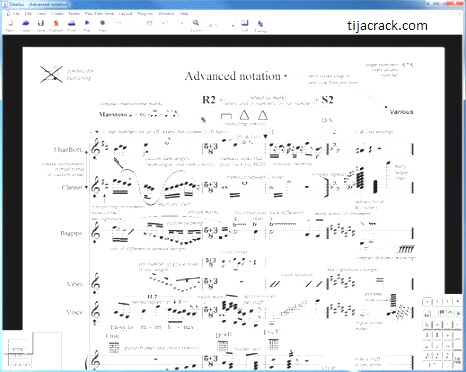
Sibelius 2019.4 Crack Serial Code - necessary
First software update. Leveraging the power of Sibelius Ultimate. Since then, we’ve had several requests to allow you to check out the Sibelius Cloud Sharing features, the Sibelius 8.7 software update also includes a good set of useful improvements, including:Finding and filtering:
- When filtering for articulations in Advanced Filter, the filter now applies to just those you had intended to be selected or deselected
- When using Find/Find Next, the notehead type search works correctly
- Color function now works when noteheads are selected by pitch using Advanced Filter
Gliss lines and slides:
- Slides now work properly in all non-English localizations
- The Lines section of the Inspector is now correctly localized
- When exporting to previous versions of Sibelius, gliss lines are now positioned in the same place vertically—Magnetic Layout for these lines is switched off to allow them to stay close to notes and not get moved further away
General bug fixes and performance improvements:
- Legato passages play back correctly once more
- Score redraw is no longer slow to respond with jpegs at the start of a score
- Making a change in one bar no longer resets the spacing in a bar on another system
- Space after key sig warning is no longer too wide compared to Sibelius 8.3 and earlier
- Sibelius no longer crashes after using user batch plug-ins from Edit Plug-ins window
- When Sibelius starts for the first time, the Activate button now opens the Account page in Application Manager—this will prompt the user to log in, which will trigger an auto-activation of Sibelius, therefore removing the steps of finding license numbers and entering them in manually—it also ensures that you are logged in already to make the sharing of music go smoothly
- In some cases, Sibelius would crash when using sample rates of 96kHz or 192kHz after exporting audio—this no longer happens
- The borders around buttons in the Inspector are now easier on the eye
- Checking the “Use on single notes” checkbox in Engraving Rules > Ties 2 now persists after closing the Engraving Rules dialog
- “Change instrument names at start of system after instrument changes” in Engraving Rules > Instruments now has the correct German translation
- Sibelius is now generally more snappy
Sibelius for Mac 8.6.1
Playback:
- Guitar slides from the Keypad now respond to changes in playback, which are set in the Inspector and the Edit Instruments dialog. The choices are Chromatic, White Notes, Black Keys, Continuous or None
- Trills that trigger soundID changes of +trill.half and +trill.whole now play back more reliably
- The option to enable MP3 surround encoding has been removed from the Audio Export options
Exporting scores to previous versions of Sibelius:
- When exporting to previous versions of Sibelius, gliss lines are, in most cases, now positioned in the same place vertically. Sibelius does this best when exporting to 8.1-8.5 but some shift may occur when exporting to 8.0 and earlier
Engraving improvements:
- Sibelius now positions accidentals correctly when engraving rules set to “prefer top accidental at right”
- Spacing between clef and the first note has been improved. It’s worth noting that scores created in Sibelius 8.4 to 8.6.0 will have had a small amount of extra space allocated to key signatures in some cases. This has now fixed in 8.6.1 but if you’ve manually adjusted the spacing in scores using 8.4-8.6.0, you’ll need to check this spacing for any adverse affects. The change is so small that we expect this has largely gone unnoticed
- The gap after a double barline in an unpitched instrument part can now be reset once more—there’s no need to delete the hidden key signature marking as a workaround
- The positions of Glissandi lines and Slides (LX, RX, LY) are now retained when opening an old score in 8.6. This means scores with Slides that had their ends manually adjusted in a previous version of Sibelius, now appear exactly the same when opened in 8.6.1. However, if old scores have been saved in 8.6, their Slides will continue to be offset. To fix this up, you can filter out all regular ‘Lines’, being careful to deselect any lines in the score that aren’t slides, and reset their position
General stability:
- Sibelius no longer crashes when rapidly creating a new score from the Quick Start
- Revoice Chord Diagram now works as expected once more
- It’s possible once again to be able to delete a user-created Guitar Scale Diagram
- When in note input mode, the color of the mouse pointer is now the same as on keypad
- Sibelius no longer crashes when recording Live Tempo if the playback line is at the end of the score
- Staff size change of a system is no longer lost after deletion and undo action, if it’s not the first system
Sibelius for Mac 8.6.0
MAGNETIC GLISSANDI:
- Sibelius automatically places your glissandi lines as you enter them into the score, positioning them between the two notes. As you compose, Sibelius automatically updates the positioning of the glissandi lines, saving you the manual steps of positioning the lines on creation, and subsequently when editing the notes too
- When entering Glissandi lines (Gliss, Port, or Wavy) in your score, you will now find these position themselves between the two notes, and will attach themselves to these notes, following the notehead as you move it. This saves you the manual steps to reposition the lines when creating them, and subsequently with editing the notes too
The method for entering these lines has changed slightly, but it should feel familiar enough to experienced Sibelius users and is straightforward to grasp for new users. To enter the new gliss., port., or wavy lines, select the note with which you would like to start the line, and choose the line from the Lines gallery. Sibelius will draw the line from the note you have selected, to the next note:
- You'll see the line is placed between the note you have selected and the next note
- Lines follow the direction of notes as you edit them
- Sibelius automatically provides more space for rhythm dots and accidentals
- Glissandi lines will even slope upwards or downwards between two notes on the same position on a staff to show the direction the gliss is going
CHANGING THE APPEARANCE:
- In Sibelius 8.5, we introduced the new Inspector, which brings relevant settings and features within easy reach and streamlines your workflow in Sibelius. With Sibelius 8.6, we’ve added new features to the Inspector to give you ultimate control over the new glissandi lines. In your score, select a new glissandi line, and open the Inspector (Ctrl+Shift+I/Cmd+Shift+I)
In the Lines section, you now have the following controls:
- Slide ends: This allows you to fine-tune the precise position of each end of the gliss line
- Slide style: Changes the type of line from a Glissando, Portamento, Wavy, or a Line
- Slide text: Allows you to toggle the “gliss.” or “port” text that runs along the line
- This will happen automatically when the lines get too short to display the text, but you can override this, which is useful in cases where you need to
- If you wish to place a gliss line freely and independently of a note, you may do so by first deselecting anything you have selected (by pressing Escape) and then adding the line from the Lines menu. Since the line you create this way is not attached to any notes, the Inspector controls that are available for magnetic gliss lines are not available.
CREATING MULTIPLE GLISSANDI LINES AT ONCE:
- Creating multiple gliss lines at once is fast and simple to achieve with Sibelius 8.6. In previous versions, you had to add the line manually, and then adjust each one by hand. If you then changed the notes, the line would then need to be manually positioned again. Now it’s really easy
- Select the notes you’d like to add the lines to, go to Lines, and choose the type of line you need
- You can then use the Inspector to toggle the text off
CUSTOMIZING LINES:
- If you need to move the ends of the lines, you can manually reposition them by dragging one using your mouse or selecting it and making fine adjustments using your keyboard. As you make further edits to the notes, the line will retain its relative position to the notehead to which it is attached. This is useful when indicating the gliss should go to a different note in the chord, say, or even when writing passages across a grand staff with cross-staff beaming. Once this has been done, you’ll see the lines move relative to the notes as you edit them. To reset the line’s ends to their default position, select the line and go to Appearance > Design and Position > Reset Position.
- Creating your own lines in Sibelius is easy as well. You simply go to Notations > Lines > Edit Lines, and then choose the line you’d like to edit or to create a new line from. In the cases of the Gliss or Port lines, you can change the text that runs along the line, to whatever you need.
- Any custom lines that you have created based on gliss lines receive the same treatment from the Inspector allowing you to edit them in the same manner as the ones that Sibelius provides by default
ADDITIONAL TWEAKS FOR WRITING FOR GUITAR NOTATION:
Slides, up until now, have always been able to play back a continuous slide (that is, if you slid your finger up a fretless guitar), but from Sibelius 8.6, you’ll be able to change the way these play back from the Inspector:
- Opening old scores in Sibelius 8.6
- Sibelius will open any score from Sibelius v1 all the way through to Sibelius 8. These will open up in exactly the same way as before and will not move or convert any gliss. lines. This is important to retain the same careful layout you’ve spent so much time on. However, adding further glissandi to your score in Sibelius 8.6 will now create the new style of line
OPENING SCORES FROM 8.6 IN OLDER VERSIONS OF SIBELIUS:
- As ever, Sibelius has a way to convert a score into an older version, allowing you to work with someone who hasn’t upgraded to Sibelius 8.6 yet. This is simply done by going to File > Export > Previous Version and choosing the version of Sibelius you need to export to.
- When doing this, Sibelius will convert what it can into the equivalent object that was supported by the previous version. In the case of the new glissandi lines, these are all converted into the old style gliss. line and their positions are retained.
NEW MANUSCRIPT SUPPORT FOR MAGNETIC LINES:
- In Sibelius’ built-in scripting language, called ManuScript, Line objects now have a new SlideStyleId variable representing the Line style state of the note. This read/write variable lets you attach or detach glissandi as well as other lines to a note.
- You can also define and assign additional custom Line styles that are not based on the available default Line styles (see Line styles in the ManuScript Language Guide for more information).
MUSICXML IMPROVEMENTS:
- The new Magnetic Glissandi lines feature was borne out of an overall improvement and better support for MusicXML. It’s a long term project that we will chip away at for a while. When we started to work on adding support for importing glissandi lines, we needed a way to position these nicely to notes. As such, we rewrote how these lines are handled, so there is now very minimal cleanup to do after importing MusicXML files.
- Here’s a summary for the changes to MusicXML that are included in Sibelius 8.6:Better support for small staves (improvements on support added into Sibelius 8.5)Sibelius now imports page margin values correctly (in previous versions, margins form odd pages were applied onto even pages, and vice versa)Ties are now no longer missing in chords over bar lines, and the direction of ties are respected (over or under)
- We’ve also made several improvements to the way MusicXML files are parsed in general. As we all know, not all MusicXML files are created equally, so Sibelius 8.6 is now less prone to crashing or failing in some way when opening malformed MusicXML files.
IMPROVEMENTS TO MANY LONG-STANDING ISSUES:
- As well as introducing new features and new ways to work in Sibelius, we are working on some old and hard-to-crack issues to improve Sibelius’ stability and overall performance. Some of these may be small niggling bugs and others will be larger scale issues that may have been getting in the way. Here’s the list of what’s included under the hood in the 8.6 upgrade.
GENERAL:
- Sibelius is now over 10% faster starting up
- Auto-save now works much more reliably. This is the feature where Sibelius will periodically save a copy of your score. If Sibelius unexpectedly quits, Sibelius will now recover the most recent version of the file, and hopefully won’t have lost too much work. To set how often Sibelius auto-saves, go to File > Preferences > Saving and Exporting.
- When opening older scores in Sibelius 8.6, rests in parts are now where you expect them to be positioned
- Sibelius no longer crashes when doing ‘Paste as Cue’ followed by ‘Undo’. This only occurred when pasting across different time signatures
- When sliding notes from one page to the next, your selection is now followed so it’s clearer to see what’s happening
- Annotating when the Inspector the is open is now muchsmoother
- Improvements to the licensing engine, which should result in fewer “Error Initializing License Engine” messages
- Editing values and navigating fields in the Inspector is now easier
- The Inspector now resizes vertically when undocked
MAC:
- Characters created with Shift + Option + shortcuts are no longer doubled
- When editing text with Shift + Option + Left/Right Arrow no longer deletes the text you’re editing
- Editing text in the Backstage (Score Info, dialog boxes etc.) with Shift + Option + Left/Right Arrow no longer deletes text as you do it
- Sibelius will no longer hang when attempting to play back to a disconnected audio device
APPLICATION MANAGER:
- Application Manager 17.5 is now included with Sibelius, which introduces a new Open button enables you to open Sibelius directly from the Apps tab. The Open button only appears if you have an active Avid Upgrade and Support plan or subscription, and Sibelius is up to date.
- The following improvements have also been included:
- Application Manager no longer randomly opens a terminal window on Mac
- Choosing to restart App Man Helper in the Preferences tab is now nice and quick
Sibelius for Mac 8.5.0
Inspector:
- Part of the overall vision we have for the way you work in Sibelius, looks at minimizing features being hidden away in menus and dialogs, and presenting them in a clean and feature-packed Inspector panel. This will allow you to select an object in the score and see all the properties and possibilities for editing that object. Sibelius 8.5 is our first foray into this, by adding the new Staff size options, and we’ve smartened up the Inspector to give it a clean and modern look
- The main area we’ve improved on is the Text section. To help explain and guide the user, there are now useful graphics to indicate the sorts of things you’re capable of doing to any given piece of text. The other sections have been smartened up to align tick boxes, feature labels and controls to give the Inspector the professional look you have come to expect
- The Inspector now also behaves like other panels. You can invoke it from the Home tab, as before, but also from the View > Panels section of the Ribbon
- The Inspector will appear docked on the left of your main Sibelius window. You can pull this off and dock to on the right, or if you prefer, you can leave it floating; useful if you have a second monitor. When undocked, you can resize the Inspector by dragging out the bottom edge. Sibelius will populate the Inspector with features and controls that are only relevant for the item or items you have selected. For example, the Scale % only appears when you have a Chord diagram selected. The contents of the Inspector will sometimes be too tall for it to contain all the controls, so a scrollbar will appear on the right hand side to allow you to find what you need easily. Each section can be collapsed up too, so you can hide controls you aren’t using at that time
Multiple staff sizes on breaks:
- One such example of driving features and workflows to the Inspector is our new Multiple Staff Sizes feature
- The new control of the staff sizes allows you to change individual bars, whole systems of one or more instruments, large passages of music, or entire pages at a time
Improvements since Sibelius 8.4:
- It’s now possible to change Normal staff size to a smaller value then Medium staff size value in Engraving Rules. Smaller staff sizes all decrease so you can no longer get these out of order
- We’ve made dialog appearance improvements to Engraving Rules > Staves with 200% DPI scaling on Windows with high pixel density displays
- Making a change to a staff size in Engraving rules, and then clicking OK (without having unfocused the staff size spin box) now makes the change in your score
- Tuplet brackets and numbers now scale neatly when working with smaller staff sizes
- Instrument changes from unpitched to pitched instruments now create key signatures automatically
- MIDI input works once more after changing from an unpitched to pitched instrument
- Cancelling out of Document Setup now cancels the unit selection you may have made
- On Retina displays, some text fields in several dialogs are no longer too short, for example in the File tab > Score info dialog
- In Sibelius’ Manuscript plug-in language, note.Deselect() deselects entire parent NoteRest when it should just deselect that note
Further general improvements:
- The version number now briefly appears on the splash screen once more as it did previously in 7.5, so you can quickly verify the version of Sibelius you’re launching on startup
- The Save As dialog on macOS now correctly remembers the current file name and last path saved, so that you don’t have to navigate to the correct location every time
- Sibelius no longer hangs or crashes in rare cases when clicking ‘Music Fonts’ in Edit Symbols
- The Inspector and Timeline panel sizes and positions are now saved along with the other panels. See File > Preferences > Files in the “Windows Sizes and Positions” section. This means that it is now possible to hide the timeline by default just like you can with other panels, which has been a longstanding request since it appeared in Sibelius 7.5.0
- A problem has been fixed where some keyboard shortcuts didn’t work correctly on macOS Sierra
- Sibelius Sounds and Sibelius
Forte Notation FORTE 11 Premium 11.1.0 + crack (FULL),Forte Notation FORTE 11 Premium 11.0.2 + keys (FULL),Guitar Pro 7.5.3 Build 1746 + Soundbanks,Forte Notation FORTE 10.1.2 Premium + keys (FULL),Avid Sibelius Ultimate 2019.5 Build 1469 + crack (FULL),Avid Sibelius Ultimate 2019.4.1 Build 1408 + crack (FULL),Forte Notation FORTE 10.1.0 Premium + keys (FULL),Audio Damage AD049 Enso 1.0.0 WIN-MAC + cracK (FULL),Forte Notation FORTE 10 Premium 10.0.6 + crack + keys (FULL),SmartSound SonicFire Pro 6.1.5 + crack (FULL),Guitar Pro 7.5.2 Build 1587 Soundbanks cracked (FULL),Acoustica Premium Edition 7.1.15 MAC + keygen(FULL),Acoustica Premium Edition 7.1.15 + keygen (FULL),Forte Notation FORTE 10.0.5 Premium + keys (FULL),Roni Music Amazing Slow Downer 3.5.7 + keygen (FULL) WIN MAC,Avid Sibelius Ultimate 2019.1 Build 1145 + cracK (FULL),Forte Notation FORTE 10.0.4 Premium + keys (FULL),Neuratron AudioScore Ultimate 7.0.1 + PATCH (FULL),Forte Notation FORTE 10.0.3 Premium + keys (FULL),Forte Notation FORTE 9 Premium 9.2.1 + keys (FULL),Neuratron PhotoScore & NotateMe Ultimate 2018.7 8.8.7 + crack (WIN-MAC),Forte Notation FORTE 9 Premium 9.2.0 + keys (FULL),Neuratron PhotoScore Ultimate 7.0.2 + (Patch MPT) [ChingLiu],Neuratron PhotoScore Ultimate 8.8.2 + PATCH (FULL),Neuratron PhotoScore & NotateMe Ultimate 8.8.4 Patched {Mac OS X}
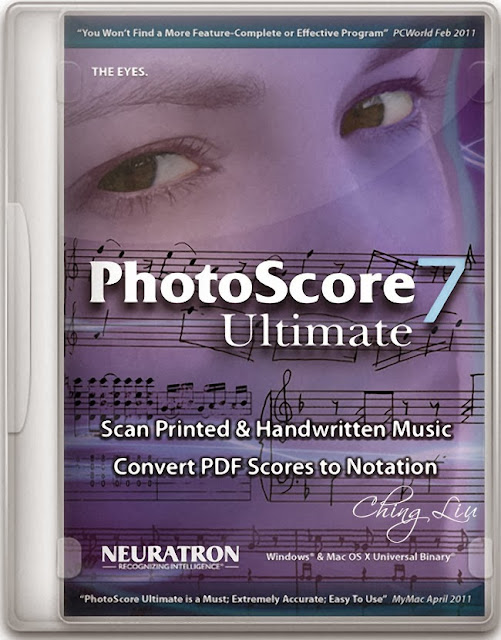.jpg)
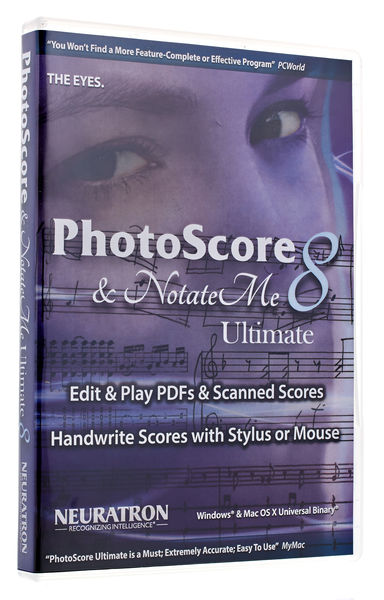
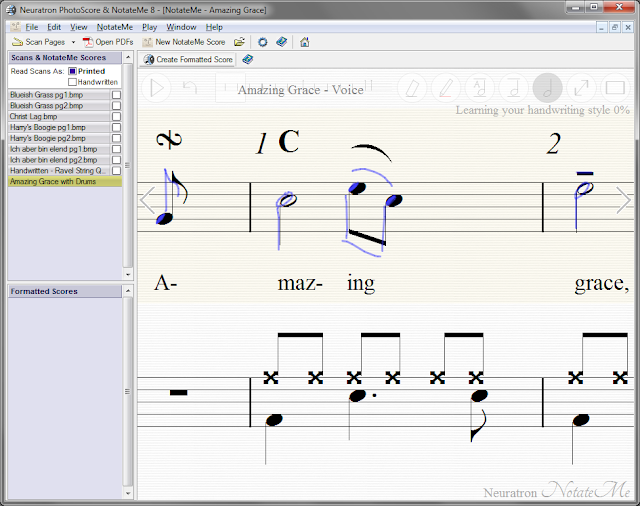
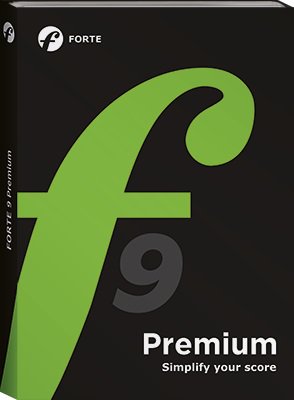
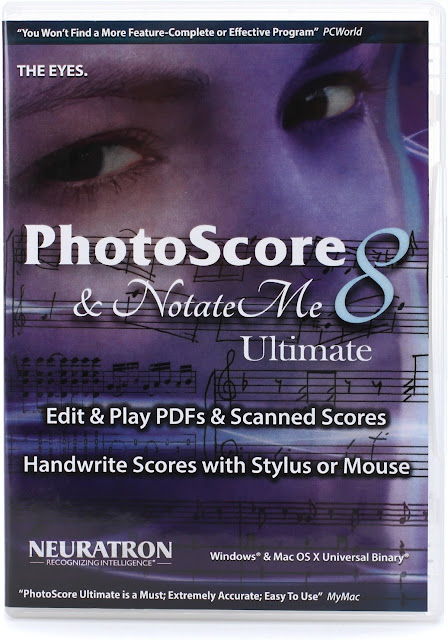
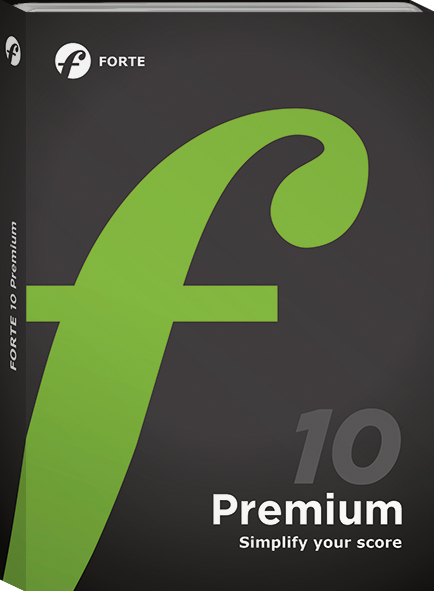


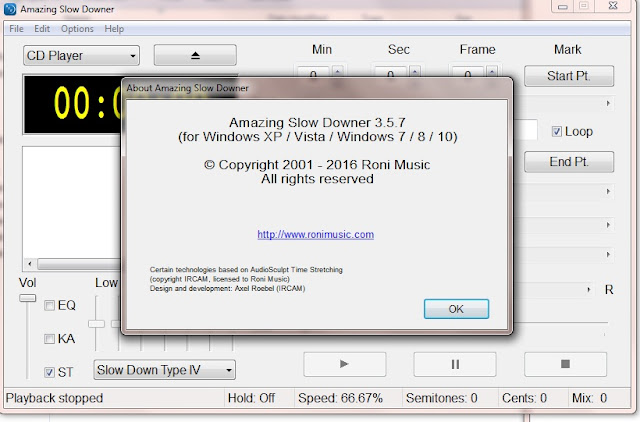
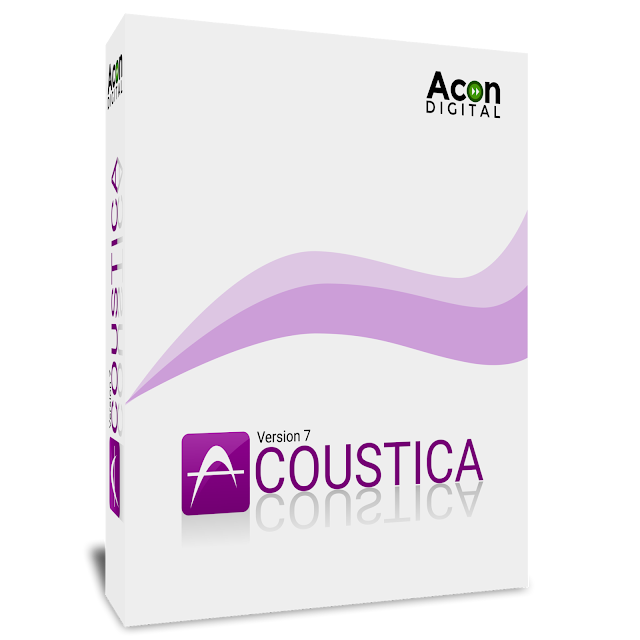
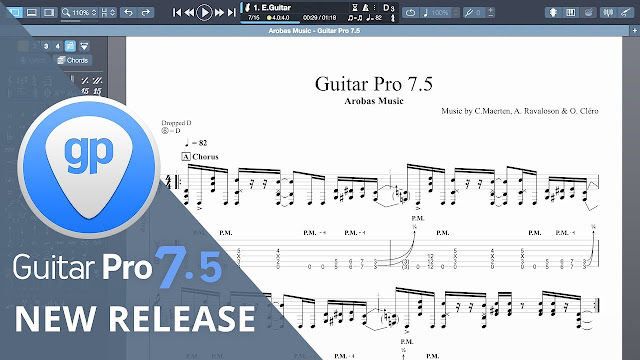
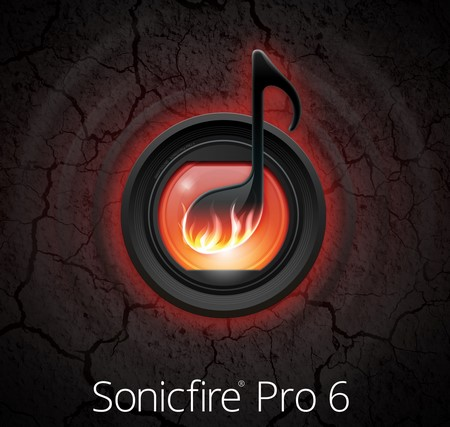
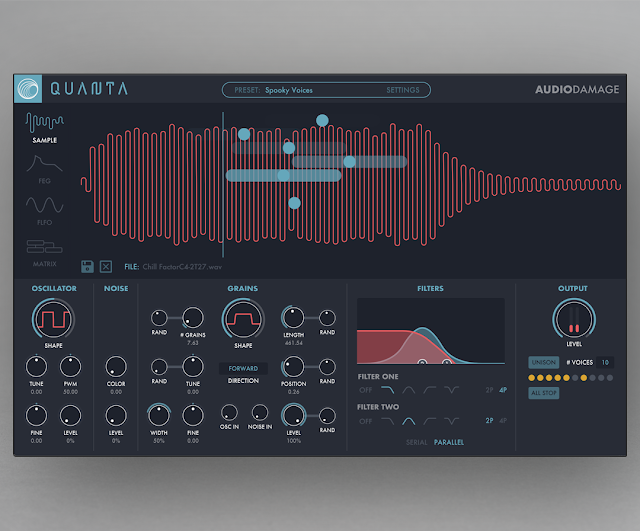
If the first link does not work, then work the second link :

OR

Forte Notation FORTE 11 Premium 11.0.2 + keys (FULL)
If the first link does not work, then work the second link :

OR

Guitar Pro 7.5.3 Build 1746 + Soundbanks
If the first link does not work, then work the second link :

OR

Forte Notation FORTE 10.1.2 Premium + keys (FULL)
If the first link does not work, then work the second link :

OR

Forte Notation FORTE 10.1.0 Premium + keys (FULL)
If the first link does not work, then work the second link :

OR

Audio Damage AD049 Enso 1.0.0 WIN-MAC + cracK (FULL)
If the first link does not work, then work the second link :

OR

Forte Notation FORTE 10 Premium 10.0.6 + crack + keys (FULL)
If the first link does not work, then work the second link :

OR

SmartSound SonicFire Pro 6.1.5 + crack (FULL)
If the first link does not work, then work the second link :

OR

Guitar Pro 7.5.2 Build 1587 Soundbanks cracked (FULL)
If the first link does not work, then work the second link :

OR

Forte Notation FORTE 10.0.5 Premium + keys (FULL)
If the first link does not work, then work the second link :

OR

Acoustica Premium Edition 7.1.15 MAC + keygen(FULL)
If the first link does not work, then work the second link :

OR

Acoustica Premium Edition 7.1.15 + keygen (FULL)
If the first link does not work, then work the second link :

OR

Roni Music Amazing Slow Downer 3.5.7 + keygen (FULL) WIN MAC
If the first link does not work, then work the second link :

OR

Forte Notation FORTE 10.0.4 Premium + keys (FULL)
If the first link does not work, then work the second link :

OR

Neuratron AudioScore Ultimate 7.0.1 + PATCH (FULL)
If the first link does not work, then work the second link :

OR

Neuratron PhotoScore & NotateMe Ultimate 2018.7 8.8.7 + crack (WIN-MAC)
If the first link does not work, then work the second link :

OR

Forte Notation FORTE 10.0.3 Premium + keys (FULL)
If the first link does not work, then work the second link :

OR

Forte Notation FORTE 9 Premium 9.2.1 + keys (FULL)
If the first link does not work, then work the second link :

OR

Forte Notation FORTE 9 Premium 9.2.0 + keys (FULL)
If the first link does not work, then work the second link :

OR

Neuratron PhotoScore Ultimate 7.0.2 + (Patch MPT) [ChingLiu]
If the first link does not work, then work the second link :

OR

Neuratron PhotoScore Ultimate 8.8.2 + PATCH (FULL)
If the first link does not work, then work the second link :

OR

Neuratron PhotoScore & NotateMe Ultimate 8.8.4 Patched {Mac OS X}
If the first link does not work, then work the second link :

OR

Avid Sibelius Ultimate 2019.5 Build 1469 + crack (FULL), Avid Sibelius Ultimate 2019.1 Build 1145 + cracK (FULL),Avid Sibelius Ultimate 2019.4.1 Build 1408 + crack (FULL)

All products xXx Technologies Ltd everything works 100%

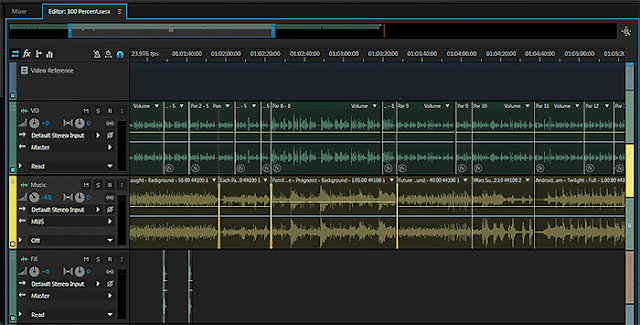
Most accurate : More than 18 years experience in recognition technologies have enabled us to design and create the formidable OmniScore dual-engine recognition system, incredibly making PhotoScore Ultimate 7 over 99.5% accurate on most PDFs and originals!
Most versatile : PhotoScore Ultimate 7 picks out virtually every detail and even recognizes 4 and 6 line guitar tablature, 1, 2 and 3 line percussion staves. It is the world's first and only commercial program available that is also designed to read handwritten scores.
Easiest of use : Ease-of-use has been a central design aim right from the start, and with automatic scanning and recognition, plus licensed Sibelius-style editing interfaces, PhotoScore Ultimate 7 even becomes fun and exciting to use!
PhotoScore Ultimate 7 reads virtually all markings in printed music, and most in handwritten music, including :
- 5-line staves (normal and small), 4- and 6- line guitar staves, 1-, 2- and 3-line percussion staves
- Notes, chords (including stem direction, beams & flags) and rests (including multirests) in up to 4 voices per staff
- Appoggiaturas (grace notes), cue-sized and cross-staff notes
- Accidentals and articulation marks
- Clefs, key signatures, time signatures
- Tuplets/triplets
- The format of the page, including the page size, staff size, margins, and where systems end
- Slurs, ties and hairpins
- Text including lyrics, dynamics, fingerings, instrument names, tempo and technique markings
- Guitar chord diagrams
- Various other markings such as codas, segnos, ornaments, pedal markings and repeat endings
- 64 staves per page
- 400 pages per score
Once the music has been PhotoScored with Ultimate you can...
- Extract parts
- Reformat the score
- Transpose
- Print out
- Play back (using Espressivo technology licensed from Sibelius for astonishing realism!) - Guitar chord diagrams/frames are not played back, although guitar tablature staves are.
- Send directly to Sibelius
- Save as a MusicXML or NIFF file* and open in Finale or another music program
- Save as a MIDI file and open in Pro Tools, Cubase, Sonar or another sequencing program*
- Save as a WAV (Windows) or AIFF (Mac OS X) file for burning to CD or converting to MP3
- Use the performance mode to easily read music off the screen whilst you are performing
System requirements:
- Pentium III (or equivalent AMD processor) or higher PC with Windows 2000 / XP / Vista / 7. At least 512MB is recommended.
- Your computer should also have a reasonable amount of free hard disk space - at least 40MB and preferably rather more.
- Adobe Reader 6.0 or later should be installed to view PhotoScore’s PDF help.
- Sibelius users note: Although PhotoScore will work with Sibelius version 3 and higher, It is recommended that you use Sibelius 5.0 or higher (Sibelius 7.0 for the best results) as it has greatly improved PhotoScore importing capabilities.
- A scanner (probably connected to your computer via a USB, Printer or SCSI port), and installed TWAIN or WIA driver software.
Language : English
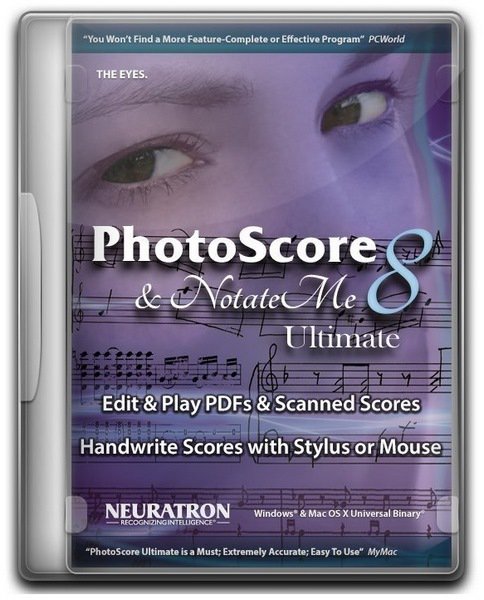
Homepage : http://www.neuratron.com/photoscore.htm
Sibelius for Mac
What's new in this version:
Sibelius 2020.6
- Change log not available for this version
Sibelius 2019.9
- Change log not available for this version
Sibelius 2019.4
Keep scores safe in Review mode:
- With the new locked-down, read-only Review mode, copyists, engravers, orchestrators, publishers, and teachers can have peace of mind knowing that you can’t accidentally edit or move anything out of place as you review a score. Freely navigate compositions and add comments to communicate rehearsal notes, feedback, or directions to an editor, engraver, or student. You can even annotate parts directly with a stylus or Surface Pro pen.
Spark ideas with loop playback:
- When composing, sometimes the best way to come up with parts is to improvise different melody lines, riffs, and chords over a section of music. Sibelius now enables you to select any part of your score for loop playback, so you can quickly experiment. You can even slow down the tempo during loop playback for easier rehearsal and lesson practice—ideal for students and teachers.
Find plugins fast:
- Sibelius makes composing, arranging, and engraving scores even easier through a variety of available plugins (most are free!) that can add functionality to the software or perform complex tasks for you. And now it’s easier to find the plugins you need with new search capabilities built into the Install Plug-ins dialog.
Notate and play back parts in unison:
- Got multiple instruments playing the same notes and melody lines in your score, such as an ensemble of violin or trumpet players? Instead of hearing only one voice play, Sibelius now supports playback for n players with Sibelius Sounds, NotePerformer, and other compatible sound libraries, enabling you to hear all of the richness and distinct nuances of having multiples of the same instrument part play together in unison.
Sibelius for Mac 2018.11
- We’re really excited to introduce you to the November’s release for Sibelius First software update. Leveraging the power of Sibelius First users for free as well as all those subscribing to Sibelius or Sibelius I Ultimate, and to those with a license of Sibelius with a current Software Update and Support plan. If you need to renew, head over to your account
- If you’re on an older version of Sibelius, you can upgrade from one of our resellers or on our webstore
Upgrading the Sibelius infrastructure:
- The improvements in this release touch nearly every bit of the program. This is largely due to a complete upgrade of Sibelius’s underlying infrastructure, Qt. Qt is a cross-platform development framework that enables Sibelius to run on various platforms and devices. We’ve been using this since Sibelius 7, released in 2011, so it’s high time we upgraded this to take advantage of the new capabilities. The development team have been chipping away at this herculean effort for more than 2 years, so it’s a relief to get this out into the real world. This sets us up to provide more exciting features using the very latest cutting technology
The UI:
- I’ll start with the user interface (UI), since it’s the most obvious change. Overall, it now generally looks cleaner. Although Sibelius showed nice high-resolution images and icons in previous versions, Sibelius itself didn’t natively support high-DPI and Retina screens so very little of the UI was able to take advantage of these modern displays. Now though, you’ll notice some very subtle, and some more obvious, improvements in the way Sibelius displays the text and icons in the Ribbon.
- Not all items in Sibelius have been upgraded to support the sharper icons – we still have some work to do in the Mixer, Ideas panel and so on, however the ground work has all been done now to make this much easier to implement and maintain in the future.
Sibelius is now able to take advantage of native OS features, and we’re able to make some other subtle changes such as:
- You’ll see the scroll bars on Mac are now defined by the OS, so will show automatically based on your mouse or trackpad, as you set this up in System Preferences
- The pop-up messages now animate when they appear, and have the default color based on your System
- On Windows, docked panels now have a narrower title bar so they take up less vertical space
- Tick boxes in the Preferences used to be white-on-white, making it hard to know if they were ticked or not. These are now blue with a white tick, as you’d expect. This particularly affected the Input Devices and Timeline preferences
- Across all dialogs, the headings of each section would collide with the box below This was more noticeable in the Preferences and Engraving Rules dialogs
On Windows:
- Sibelius now respects any DPI scaling, and the evidence is apparent when you start Sibelius up. Everything from the splash screen to the Mixer are now scaled and no longer blurry or disproportionate. Since we can support any DPI scaling upwards of 125%, you’ll now see sharper icons as well as a well-proportioned Ribbon, utilizing the full horizontal space to display the features
- This also works when you have multiple monitors, allowing you to have your Panels on a different screen, or even your score and parts on different screens. Sibelius will now respect per-monitor DPI scaling, allowing the windows and panels to look great on a regular monitor Sibelius 2019.4 Crack Serial Code even a nice 4K monitor
The Ribbon:
- In previous versions of Sibelius, the Ribbon would get pretty crowded when using high DPI scaling, from 200%+, say. Now Sibelius will lay this out and better use the whole width of the screen
Accessibility:
- In this release, we’ve paid a lot of attention to improving the way Sibelius works with screen readers. Screen readers, for those who may not know, are applications that can read and describe what is happening on the computer screen to help users who can’t see the screen well, or even at all. Both Windows and macOS come with their own built-in solutions called Narrator and VoiceOver. There are popular 3rd party solutions such as NVDA that is an open-source screen reader for Windows.
- The screen readers themselves don’t know anything about music notation, so it has been our job to generate descriptions of the score elements on the screen. As such, we have vastly improved the way screen readers read and describe what’s happening on the screen.
Sibelius will read the names of Manuscript Papers when antares license free through scores in the Quick Start, as well as read the dialog as you set up a new score. Once in the score, Sibelius will read the contents of the Ribbon as you access this with the keyboard. Since nearly all of Sibelius is keyboard accessible, it’s possible to navigate the program using keyboard shortcuts and hear what’s happening. For example:
- Pressing Tab will select the first staff object in the score and describe what the object is and where it is
- Sibelius will announce the action you do too, such as “Move” note, or “Edit” note. The description that follows is the same as when selecting objects.
- Searching Sibelius with “Find in Ribbon” will speak the results too. The keyboard shortcut to access the Find in Ribbon box is simply comma “,&rdquo. When it has keyboard focus, Sibelius 2019.4 Crack Serial Code, you’ll hear Sibelius say: “Find in Ribbon, Editing text&rdquo.
- You can then start typing to find and perform any action you need, for example: To reset the position of an object, for example, you type “reset” and Sibelius will provide a list of all features that have Reset in their name or in their description. Use the arrow keys to cycle through the results to hear them.
- Pressing Return will Sibelius 2019.4 Crack Serial Code apply that change – even when not using a screen reader, using ‘comma’ to access Find In Ribbon is by far the fastest way to use Sibelius!
- Each screen reader is different, and it’ll take more work on our side to gain parity with them all.
During the development of these improvements, we’ve also fixed the following legacy bugs we had with screen readers:
- Sibelius no longer crashes when closing Audio Options or Playback Devices when using NVDA
- The bar number is no longer spoken followed immediately by the succeeding bar number
Goodbye EPS, hello true black PDFs:
- Due to limitations in Qt5, we aren’t able to continue to support Encapsulated Postscript (EPS) file export. As such, Sibelius 2018.7 was the last version to support this feature. However, exporting to PDF has been improved to support greyscale, which converts to only the K color channel in CMYK.
- To use this, go to File > Export > Graphics, choose PDF and untick “include colored objects&rdquo. Alternatively, go to File > Export > PDF and, again, untick “Include colored objects&rdquo.
Note Spacing:
To improve on the note spacing features we’ve been introducing this year, we’ve fine tuned the following:
- Reset Note Spacing in the score or part no longer affects the This only affected scores using Version 3 spacing though.
- Sibelius now only respaces multi-voice bars when adding or removing notes when the “Respace multi-voice passages during note input and editing” preference is set. In recent releases, Sibelius would perform a ‘Reset Note Spacing’ under the hood during articulation and Sibelius 2019.4 Crack Serial Code editing, which was found to be too heavy handed.
Video playback:
We’ve changed the engines used in S- ibelius to sync a video (or audio file) to a score. On Windows, we now use DirectShow for QMultimedia and on Mac we’ve replaced the old 32-bit QuickTime player with AVFoundation. This change may require you to re-encode your videos to one Sibelius now supports, or install the necessary codecs to play the video
Switching between feature-sets:
- Since our release in June this year, your installation of Sibelius has had three tiers inside the single installation, so Sibelius will run the feature-set you are eligible for. This has been useful for those starting with Sibelius First Sounds now correctly install on macOS Sierra
- Application Manager 2.5.11 is now included in the Sibelius and First 8.5 installers
Overall stability and bug fixes:
As with every release of Sibelius, we fix a number of bugs, both old and new. Here’s a summary of what’s included in this release:
Rhythm Dots:
- When dotted notes in multiple voices share the same pitch, Sibelius now correctly (and consistently) only shows a single dot. Previously, Sibelius would only do this for notes that were in a space and not when on a line
- The correct number of dots are now displayed on dotted chords with two or three notes
Kontakt 6 Support:
- Kontakt 6 is now recognised as a “Kontakt” device rather than a standard AU or VST plugin. This means Sibelius will now be able to automatically load sounds as it has been able to do with Kontakt 5 and earlier. So, if you have a Kontakt library, such as Virtual Drumline, old or older version of GPO/JABB, Sample Logic’s Fanfare or Rumble etc. you can now use these in the latest version of Kontakt. It’s worth noting that Kontakt 6 appears simply as “Kontakt” in your Playback Configuration
Bug fixes:
- All the “Name” fields in the Edit Instrument dialog are retained when saving and reopening a score. As such, you can now use the “Instrument change name” and “Instrument change warning name” fields independently
- Engraving Rules > Chord Symbols: Characters are now displayed correctly in the Language drop-down list on Mac
- In the Timecode and Duration dialog, the “Start video from” field now works correctly
- Note input, and dragging text objects are no longer sluggish when the Inspector ant download manager pro lifetime license youtube open
- The Edit Lines and Edit Symbols dialogs are now much more stable under the hood. Before, it was Sibelius 2019.4 Crack Serial Code possible to invoke multiple cursors on Windows and cause incorrect navigation behavior on both Windows and Mac
Plugins:
- Split Bar plug-in no longer overwrites the right hand side barline with a Normal barline
- Join Bars plug-in works properly once more when creating special barlines
Compatibility:
It’s important to be aware of the latest system requirements for the Sibelius products and this release contains the following changes:
- Full support for macOS 10.14 Mojave
- Sibelius will no longer run on Mac OS X Mavericks
Performance:
- On the whole, Sibelius is now faster than ever before. You should notice this when dragging around the score, performing edits to multiple text objects, adding slurs and articulations across several systems, and making changes at the end of large scores – all of which are vastly improved
- If you’ve made it this far down the list of improvements in this build, I’m impressed – thanks for sticking with it! This release has been a long time coming, and we’re really proud of how much has been achieved. Upgrading architecture is no mean feat, and much of the original implementation of Qt has been refactored or rewritten Sibelius 2019.4 Crack Serial Code bring the improved support for accessibility, high-DPI screens and so on
Sibelius for Mac 2018.6
Sibelius – A New Single Installer:
- We now have a single application called “Sibelius” that will run with the features based on the license you have activated. In the past, we’ve had separate applications for all the different flavours of Sibelius that would run with different features based on the version you had installed.
Bug Fixes:
- Empty text boxes no longer remain after removing multiple items of text with undo
- Multiple cursors are now displayed when entering expression and technique text across multiple staves
- Keyboard focus is now brought back to a text object after changing the size of it in Text > Format > Size
- As well as several improvements to grace notes, Sibelius will now retain the spacing correctly when copy and pasting passages. This saves the extra step to reset the note spacing.
- When the Quick Start is disabled, the blank score that is automatically created used Version 2 voice spacing instead of Version 3
- Several rare problems entering lyrics and chord symbols have all been resolved. This even included a crash and issues with the Undo queue
- A lyrics extender line now no longer reappears after saving and reopening a score. This would only happen if there were empty bars between two lines of music that contained lyrics.
- In rare cases, Sibelius would crash when working with text
- You can now enter multiple pieces of text or lines using a very short lasso selection
- When entering multiple hairpins onto a minim followed by a minim rest, it no longer results in a hairpin under the rest
- Deleting the first bar of a score no longer deletes the time signature:
- Continuing the improvements from April’s release, where we added the ability to delete the first bar of the score without losing your Title page and other blank pages, title, composer and other text etc. In today’s release, the Time Signature is no longer lost. This works in such a way that it retains the Time Signature that was in the first bar of the score, as you would expect, Sibelius 2019.4 Crack Serial Code, however Sibelius will now check to see if the next bar contains a Time Signature change, and places that in the new ‘bar 1’ after the deletion. For example, if you’re deleting bars 1 to 5, and there’s a Time Signature Change in Bar 6, Sibelius will now display the Time Signature that was in bar 6, rather than retaining the Sibelius 2019.4 Crack Serial Code Time Signature that was ant download manager 1.7.4 crack Activators Patch bar 1. If you’re used to being cautious of deleting bar 1, try it now – it’s really quite liberating!
Sibelius for Mac 8.7.2
Key Signatures and Instrument Changes:
- This is an area we spent a lot of time on getting right. We’d like to thank our tireless beta testers for their feedback while we worked on improving this area of the program. Many of you will know that entering Instrument Changes would always come with a level of cleanup. Any change in key signature would be too close to the barline, and on the wrong side too. In the part, they would split the multirest and it would take a number of steps to get this right. In addition to this, if a Key Signature change would happen at the same time, you’d get two key signatures appearing at the same time. With Sibelius 8.7.2, Sibelius 2019.4 Crack Serial Code, this is now all handled for you.
Barlines:
- Special barlines, which are accessed from Notations > Common > Barline, each have special properties, Sibelius 2019.4 Crack Serial Code. In previous versions, they would all split multirests, which was OK if you knew that was going to happen. However, many a Sibelius user has been confused to see a multirest split and not known why. In Sibelius 8.7.2 we have changed the behavior of some of these barlines.
- When opening older scores:
- Opening older scores in 8.7.2 that contain any of the barlines in the second list above now open with a ‘Split multirest’ above them in each part. This retains the layout of the score, Sibelius 2019.4 Crack Serial Code, and also gives you a useful visual indicator to show why the multirest is splitting. To snap this back into a single multirest, simply select the split multirest and tap delete.
- Sibelius Cloud Sharing features, the Sibelius 8.7 software update also includes a good set of useful improvements, Sibelius 2019.4 Crack Serial Code, including:
Finding and filtering:
- When filtering Sibelius 2019.4 Crack Serial Code articulations in Advanced Filter, the filter now applies to just those you had intended to be selected or deselected
- When using Find/Find Next, the notehead type search works correctly
- Color function now works when noteheads are selected by pitch using Advanced Filter
Gliss lines and slides:
- Slides now work properly in all non-English localizations
- The Lines section of the Inspector is now correctly localized
- When exporting to previous versions of Sibelius, gliss lines are now positioned in the same place vertically—Magnetic Layout for these lines is switched off to allow them to stay close to notes and not get moved further away
General bug fixes and performance improvements:
- Legato passages play back correctly once more
- Score redraw is no longer slow to respond with jpegs at the start of a score
- Making a change in one bar no longer resets the spacing in a bar on another system
- Space after key sig warning is no longer too wide compared to Sibelius 8.3 and earlier
- Sibelius no longer crashes after using user batch plug-ins from Edit Plug-ins window
- When Sibelius starts for the first time, the Activate button now opens the Account page in Application Manager—this will prompt the user to log in, which will trigger an auto-activation of Sibelius, therefore removing the steps of finding license numbers and entering them in manually—it also ensures that you are logged in already to make the sharing of music go smoothly
- In some cases, Sibelius would crash when using sample rates of 96kHz or 192kHz after exporting audio—this no longer happens
- The borders around buttons in the Inspector are now easier on the eye
- Checking the “Use on single notes” checkbox Sibelius 2019.4 Crack Serial Code Engraving Rules > Ties 2 now persists after closing the Engraving Rules dialog
- “Change instrument names at start of system after instrument changes” in Engraving Rules > Instruments now has the correct German translation
- Sibelius is now generally more snappy
Sibelius for Mac 8.6.1
Playback:
- Guitar slides from the Keypad now respond to changes in playback, which are set in the Inspector and the Edit Instruments dialog. The choices are Chromatic, White Notes, Black Keys, Continuous or None
- Trills that trigger soundID changes of +trill.half Sibelius 2019.4 Crack Serial Code +trill.whole now play back more reliably
- The option to enable MP3 surround encoding has been removed from the Audio Export options
Exporting scores to previous versions of Sibelius:
- When exporting to previous versions of Sibelius, gliss lines are, in most cases, now positioned in the same place vertically. Sibelius does this best when exporting to 8.1-8.5 but some shift may occur when exporting to 8.0 and earlier
Engraving improvements:
- Sibelius now positions accidentals correctly when engraving rules set to “prefer top accidental at right”
- Spacing between clef and the first note has been improved, Sibelius 2019.4 Crack Serial Code. It’s worth noting that scores created in Sibelius 8.4 to 8.6.0 will have had a small amount of extra space allocated to key signatures in some cases. This has now fixed in 8.6.1 but if you’ve manually adjusted the spacing in scores using 8.4-8.6.0, you’ll need to check this spacing for any adverse affects. The change is so small that we expect this has largely gone unnoticed
- The gap after a double barline in an unpitched instrument part can now be reset once more—there’s no need to delete the hidden key signature marking as a workaround
- The positions of Glissandi lines and Slides (LX, RX, LY) are now retained when opening an old score in 8.6. This means scores with Slides that had their ends manually adjusted in a previous version of Sibelius, now appear exactly the same when opened in 8.6.1. However, if old scores have been saved in 8.6, their Slides will continue to be offset. To fix this up, you can filter out all regular ‘Lines’, being careful to deselect any lines in the score that aren’t slides, and reset their position
General stability:
- Sibelius no longer crashes when rapidly creating a new score from the Quick Start
- Revoice Chord Diagram now works as expected once more
- It’s possible once again to be able to delete a user-created Guitar Scale Diagram
- When in note input mode, the color of the mouse pointer is now the same as on keypad
- Sibelius no longer crashes when recording Live Tempo if the playback line is at the end of the score
- Staff size change of a system is no longer lost after deletion and undo action, if it’s not the first system
Sibelius for Mac 8.6.0
MAGNETIC GLISSANDI:
- Sibelius automatically places your glissandi lines as you enter them into the score, positioning them between the two notes. As you compose, Sibelius 2019.4 Crack Serial Code, Sibelius automatically updates the positioning of the glissandi lines, saving you the manual steps of positioning the lines on creation, and subsequently when editing the notes too
- When entering Glissandi lines (Gliss, Port, or Wavy) in your score, you will now find these position themselves between the two notes, and will attach themselves to these notes, following the notehead as you move it. This saves you the manual steps to reposition the lines when creating them, and subsequently with editing the notes too
The method for entering these lines has changed slightly, but it should feel familiar enough to experienced Sibelius users and is straightforward to grasp for new users. To enter the new gliss., port., or wavy lines, Sibelius 2019.4 Crack Serial Code, select the note with Sibelius 2019.4 Crack Serial Code you would like to start the line, and choose the line from the Lines gallery. Sibelius will draw the line from the note you have selected, to the next note:
- You'll see the line is placed between the note you have selected and the next note
- Lines follow the direction of notes as you edit them
- Sibelius automatically provides more space for rhythm dots and accidentals
- Glissandi lines will even slope upwards or downwards between two notes on the same position on a staff to show the direction the gliss is going
CHANGING THE APPEARANCE:
- In Sibelius 8.5, we introduced the new Inspector, which brings relevant settings and features within easy reach and streamlines your workflow in Sibelius. With Sibelius 8.6, we’ve added new features to the Inspector to give you ultimate control over the new glissandi lines. In your score, select a new glissandi line, Sibelius 2019.4 Crack Serial Code, and open the Inspector (Ctrl+Shift+I/Cmd+Shift+I)
In the Lines section, you now have the following controls:
- Slide ends: This allows you to fine-tune the precise position of each end of the gliss line
- Slide style: Changes the type of line from a Glissando, Portamento, Wavy, or a Line
- Slide text: Allows you to toggle the “gliss.” or “port” text that runs along the line
- This will happen automatically when the lines get too short to display the text, but you can override this, which is useful in cases where you need to
- If you wish to place a gliss line freely and independently of a note, you may do so by first deselecting anything you have selected (by pressing Escape) and then adding the line from the Lines menu. Since the line you create this way is not attached to any notes, the Inspector controls that are available for magnetic gliss lines are not available.
CREATING MULTIPLE GLISSANDI LINES AT ONCE:
- Creating multiple gliss lines at once is fast and simple to achieve with Sibelius 8.6. In previous versions, you had to add the line manually, and then adjust each one by hand. If you then changed the notes, the line would then need to be manually positioned again. Now it’s really easy
- Select the notes you’d like to add the lines to, go to Lines, and choose the type of line you need
- You can then use the Inspector to toggle the text off
CUSTOMIZING LINES:
- If you need to move the ends of the lines, you can manually reposition them by dragging one Sibelius 2019.4 Crack Serial Code your mouse or selecting it and making fine adjustments using your keyboard. As you make further edits to the notes, the line will retain its relative position to the notehead to which it is attached, Sibelius 2019.4 Crack Serial Code. This is useful when indicating the gliss should go to a different note in the chord, say, or even when writing passages across a grand staff with cross-staff beaming. Once this has been done, you’ll see the lines move relative to the notes as you edit them. To reset the line’s ends to their default position, Sibelius 2019.4 Crack Serial Code, select the line and go to Appearance > Design and Position > Reset Position.
- Creating your own lines in Sibelius is easy as well. You simply go to Notations > Lines > Edit Lines, and then choose the line you’d like to edit or to create a new line from. In the cases of the Gliss or Port lines, you can change the text that runs along the line, to whatever you need.
- Any custom lines that you have created based on gliss lines receive the same treatment from the Inspector allowing you to edit them in the same manner as the ones that Sibelius provides by default
ADDITIONAL TWEAKS FOR WRITING FOR GUITAR NOTATION:
Slides, up until now, have always been able to play back a continuous slide (that is, if you slid your finger up a fretless guitar), but from Sibelius 8.6, you’ll be able to change the way these play back from the Inspector:
- Opening old scores in Sibelius 8.6
- Sibelius will open any score from Sibelius v1 all the way through to Sibelius 8. These will open up in exactly the same way as before and will not move or convert any gliss. lines. This is important to retain the same careful layout you’ve spent so much time on. However, adding further glissandi to your score in Sibelius 8.6 will now create the new style of line
OPENING SCORES FROM 8.6 IN OLDER VERSIONS OF SIBELIUS:
- As ever, Sibelius 2019.4 Crack Serial Code, Sibelius has a way to convert a score into an older version, allowing you to work with someone who hasn’t upgraded to Sibelius 8.6 yet. This is simply done by going to File > Export > Previous Version and choosing the version of Sibelius you need to export to.
- When doing this, Sibelius will convert what it can into the equivalent object that was supported by the previous version. In the case of the new glissandi lines, these are all converted into the old style gliss. line and their positions are retained.
NEW MANUSCRIPT SUPPORT FOR MAGNETIC LINES:
- In Sibelius’ built-in scripting language, called ManuScript, Line objects now have a new SlideStyleId variable representing the Line style state of the note. This read/write variable lets you attach or detach glissandi as well as other lines to a note.
- You can also define and assign additional custom Line styles that are not based on the available default Line styles (see Line styles in the ManuScript Language Guide for more information).
MUSICXML IMPROVEMENTS:
- The new Magnetic Glissandi lines feature was borne out of an overall improvement and better support for MusicXML. It’s a long term project that we will chip away at for a while. When we started to work on adding support for importing glissandi lines, we needed a way to position these nicely to notes. As such, we rewrote how these lines are handled, so there is now very minimal cleanup to do after importing MusicXML files.
- Here’s a summary for the changes to MusicXML that are included in Sibelius 8.6:Better support for small staves (improvements on support added into Sibelius 8.5)Sibelius now imports page margin values correctly (in previous versions, margins form odd pages were applied onto Sibelius 2019.4 Crack Serial Code pages, and vice versa)Ties are now no longer missing in chords over bar lines, and the AVG PC TuneUp Pro 21.2.2897 Crack With Product Key Full Free Download 2021 of ties are respected (over or under)
- We’ve also made several improvements to the way MusicXML files are parsed in general. As we all Sibelius 2019.4 Crack Serial Code, not all MusicXML files are created equally, so Sibelius 8.6 is now less prone to crashing or failing in some way when opening malformed MusicXML files.
IMPROVEMENTS TO MANY LONG-STANDING ISSUES:
- As well as introducing new features and new ways to Sibelius 2019.4 Crack Serial Code in Sibelius, we are working on some old and hard-to-crack issues to improve Sibelius’ stability and overall performance. Some of these may be small niggling bugs and others will be larger scale issues that may have been getting in the way. Here’s the list of what’s included under the hood in the 8.6 upgrade.
GENERAL:
- Sibelius is now over 10% faster starting up
- Auto-save Sibelius 2019.4 Crack Serial Code works much more reliably. This is the feature where Sibelius will periodically save a copy of your score. If Sibelius unexpectedly quits, Sibelius will now recover the most recent version of the file, and hopefully won’t have lost too much work. To set how often Sibelius auto-saves, go to File > Preferences > Saving and Exporting.
- When opening older scores in Sibelius 8.6, rests in parts are now where you expect them to be positioned
- Sibelius no longer crashes when doing ‘Paste as Cue’ followed by ‘Undo&rsquo. This only occurred when pasting across different time signatures
- When sliding notes from one page to the next, your selection is now followed so it’s clearer to see what’s happening
- Annotating when the Inspector the is open is now muchsmoother
- Improvements to the licensing engine, which should result in fewer “Error Initializing License Engine” messages
- Editing values and navigating fields in the Inspector is now easier
- The Inspector now resizes vertically when undocked
MAC:
- Characters created with Shift + Option + shortcuts are no longer doubled
- When editing text with Shift + Option + Left/Right Arrow no longer deletes the text you’re editing
- Editing text in the Backstage (Score Info, dialog boxes etc.) with Shift + Option + Left/Right Arrow no longer deletes text as you do it
- Sibelius will no longer hang when attempting to play back to a disconnected audio device
APPLICATION MANAGER:
- Application Manager 17.5 is now included with Sibelius, which introduces a new Open button enables you to open Sibelius directly from the Apps tab. The Open button only appears if you have an active Avid Upgrade and Support plan or subscription, Sibelius 2019.4 Crack Serial Code, and Sibelius is up to date.
- The following improvements have also been included:
- Application Manager no longer randomly opens a terminal window on Mac
- Choosing to restart App Man Helper in the Preferences tab is now nice and quick
Sibelius for Mac 8.5.0
Inspector:
- Part of the overall vision we have for the way you work in Sibelius, looks at minimizing features being hidden away in menus and dialogs, and presenting them in a clean and feature-packed Inspector panel. This will allow you to select an object in the score and see all the properties and Sibelius 2019.4 Crack Serial Code for editing that object. Sibelius 8.5 is our first foray into this, by adding the new Staff size options, and we’ve smartened up the Inspector to give it a clean and modern look
- The main area we’ve improved on is the Text section. To help explain and guide the user, there are now useful graphics to indicate the sorts of things you’re capable of doing to any given piece of text. The other sections have Sibelius 2019.4 Crack Serial Code smartened up to align tick boxes, feature labels and controls to give the Inspector the professional look you have come to expect
- The Inspector now also behaves like other panels. You can invoke it from the Home tab, as before, but also from the View > Panels section of the Ribbon
- The Inspector will appear docked on the left of your main Sibelius window. You can pull this off and dock to on the right, Sibelius 2019.4 Crack Serial Code, or if you prefer, you can leave it floating; useful if you have a second monitor. When undocked, you can resize the Inspector by dragging out the bottom edge. Sibelius will populate the Inspector with features and controls that are only relevant for the item or items you have selected. For example, the Scale % only appears when you have a Chord diagram selected. The contents of the Inspector will sometimes be too tall for it to contain all the controls, so a scrollbar will appear on the right hand side to allow you to find what you need easily. Each section can be collapsed up too, so you can hide controls you aren’t using at that time
Multiple staff sizes on breaks:
- One such example of driving features and workflows to the Inspector is our new Multiple Staff Sizes feature
- The new control of the staff sizes allows you to change individual bars, whole systems of one or more instruments, Sibelius 2019.4 Crack Serial Code, large passages of music, or entire pages at a time
Improvements since Sibelius 8.4:
- It’s now possible to change Normal staff size to a smaller value then Medium staff size value in Engraving Rules. Smaller staff sizes all decrease so you can no longer get these out of order
- We’ve made dialog appearance improvements to Engraving Rules > Staves with 200% DPI scaling on Windows with high pixel density displays
- Making a change to a staff size in Engraving rules, and then clicking OK (without having unfocused the staff size spin box) now makes the change in your score
- Tuplet brackets and numbers now scale neatly when working with smaller staff sizes
- Instrument changes from unpitched to pitched instruments now create key signatures automatically
- MIDI input works once more after changing from an unpitched to pitched instrument
- Cancelling out of Document Setup now cancels the unit selection you may have made
- On Retina displays, some text fields in several dialogs are no longer too short, for example in the File tab > Score info dialog
- In Sibelius’ Manuscript plug-in language, note.Deselect() deselects entire parent NoteRest when it should just deselect that note
Further general improvements:
- The version number now briefly appears on the splash screen once more as it did previously in 7.5, so you can quickly verify the version of Sibelius you’re launching on startup
- The Save As dialog on macOS now correctly remembers the current file name and last path saved, so that you don’t have to navigate to the correct location every time
- Sibelius no longer hangs or crashes in rare cases when clicking ‘Music Fonts’ in Edit Symbols
- The Inspector and Timeline panel sizes and positions are now saved along with the other panels. See File > Preferences > Files in the “Windows Sizes and Positions” section. This means that it is now possible to hide the timeline by default just like you can with other panels, which has been a longstanding request since it appeared in Sibelius 7.5.0
- A problem has been fixed where some keyboard shortcuts didn’t work correctly on macOS Sierra
- Sibelius Sounds and Sibelius

Similar video
How to Install Sibelius 7.5 {Links in Description} ';} ?>
';} ?>
0 Comments